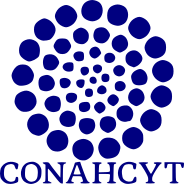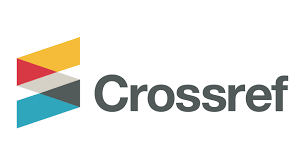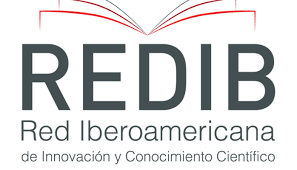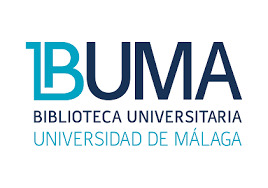Pollen morphology of Neomillspaughia and Podopterus (Polygonaceae: Eriogonoideae: Coccolobeae)
DOI:
https://doi.org/10.18387/polibotanica.53.7Keywords:
Keywords: Palynology, taxonomy, woody genera, Mesoamérica.Abstract
SUMMARY
Neomillspaughia and Podopterus are two woody genera that inhabit deciduous forests of Mesoamerica. Both genera are monophyletic and have been classified in the Coccolobeae tribe. Although each has three species, the number of these used in phylogenetic studies is limited, so that their phylogenetic relationships in the tribe are still uncertain. Palynological studies in Eriogonoideae mention that pollen presents little variation, however, taxonomic value at species level have not been explored, since there is a diverse organization of colpI, pores and ornamentation among them. The objectives of this study are to characterize the pollen of Neomillspaughia and Podopterus and to explore its taxonomic value within the subfamily Eriogonoideae. The characterization of the pollen was carried out by observations with optical and scanning electron microscopy of pollen from herbarium specimens. Neomillspaughia was characterized by the presence of prolate to subprolate grains and microreticulated ornamentation; only N. hondurensis presented a vestibular structure at the aperture. In Podopterus, the grain shape varies from subprolate to prolate spheroidal and the ornamentation from microreticulated to reticulated. P. cordifolius has reticulated exin with deep and well-defined lumens; P. guatemalensis, presents a vestibular structure at the apertures and P. mexicanus exhibits tri-tetracolporate grains and lolongated apertures. The palynological characterization of the six species revealed that the number of colpi and the patterns of ornamentation of exine are similar to those found in other genera of the Eriogonoideae subfamily, so their taxonomic value is limited. However, the variation in the shape, number of colpi and apertures, as well as in the ornamentation of the exine of the pollen grains allow the accurate identification of the species. In this study we include descriptions and palynological keys of the genera and species, as well as light and scanning microphotographs.
References
Alfaro-Bates, R., González, J., Ortíz, J., Viera, F., Burgos, I., Martínez, E. y Ramírez, E. (2010). Caracterización palinológica de las mieles de la Península de Yucatán.: Universidad Autónoma de Yucatán, Comisión Nacional para el conocimiento y uso de la Biodiversidad. Mérida, Yucatán. https://www.biodiversidad.gob.mx/publicaciones/versiones_digitales/mieles.pdf
Ayodele, A. (2005). The morphology and taxonomic significance of pollen in the West-African Polygonaceae. Thaiszia Journal of Botany 15, 143-153. https://rcpol.org.br/wp-content/uploads/2016/03/9-Ayodele-2005-The-morphology-and-taxonomic-significance-of.pdf
Blake, S. (1921). Neomillspaughia, a new genus of Polygonaceae, with remarks on related genera. Bulletin of the Torrey Botanical Club 48(3), 77–88. https://doi.org/10.2307/2480362
Brandbvge, J. 1983. The genus Leptogonum (Polygonaceae). Nordic Journal of Botany 10(5), 487-492. https://doi.org/10.1111/j.1756-1051.1984.tb02007.x
Brandbvge. J. & Ølleaard. B. 1984. Inflorescence structure and generic delimitation of Triplaris and Ruprechtia (Polygonaceae). Nordic Journal of Botany. 4(6), 765-769. https://doi.org/10.1111/j.1756-1051.1984.tb02007.x
Brandbyge, J. (1990). The diversity of micromorphological features in the genus Coccoloba (Polygonaceae). Nordic Journal of Botany 10(1):25–44. https://doi.org/10.1111/j.1756-1051.1990.tb01749.x
Brandbyge, J. (1993). Polygonaceae. In: Kubitzki K., Rohwer J.G., Bittrich V (eds.). Flowering Plants: Dicotyledons. The families and genera of vascular plants, vol. 2. Springer, Berlin, Heidelberg. pp. 531-544 https://doi.org/10.1007/978-3-662-02899-5_63
Burke, J. M., Sánchez, A., Kron, K. A. y Luckow, M. (2010). Placing the woody tropical genera of Polygonaceae: A hypothesis of character evolution and phylogeny. American Journal of Botany 97(8), 1377-1390. DOI: https://doi.org/10.3732/ajb.1000022
Burke, J. M., y Sanchez, A. (2011). Revised subfamily classification for Polygonaceae, with a tribal classification for Eriogonoideae. Brittonia, 63(4), 510–520. DOI: https://doi.org/10.1007/s12228-011-9197-x
Burger, W. 1983, Polygonceae. In: W. Burger (ed.) Flora Costaricensis. Fieldiana Botany 13. Field Museum of natural History, Chicago. pp. 99-138. https://doi.org/10.5962/bhl.title.2593
Den Nijis, J., Hooghiemstra, H. and Schalk, P. (1980). Biosystematic studies of the Rumex acetosella complex (Polygonaceae). IV. Pollen morphology and the possibilities of identification of cytotypes in pollen analysis. Phyton 20(3-4), 307-323. https://www.zobodat.at/pdf/PHY_20_3_4_0307-0323.pdf
Erdtman, G. (1952). Pollen morphology and plant taxonomy: angiosperms (an introduction to Palinology). Stockholm. Sweden: Ed. Almqvist & Wiksell.
García, L., Rivero, M. y Droppelmann, F. (2015). Descripción morfológica y viabilidad del polen de Nothofagus nervosa (Nothofagaceae). Bosque 36(3):487–96.
https://scielo.conicyt.cl/pdf/bosque/v36n3/art15.pdf
Hernández-Ledesma, P., Berendsohn, W. G., Borsch T., Von Mering, S., Akhani, H., Arias, S., Castañeda-Noa, I., Eggli, U., Eriksson, R., Flores-Olvera, H., Fuentes-Bazán, S., Kadereit, G., Klak, C., Korotkova, N., Nyffeler, R., Ocampo, G., Ochoterena, H., Oxelman, B., Rabeler, R. K., Sanchez, A., Schlumpberger, B. O., Uotila, P. (2015). A taxonomic backbone for the global synthesis of species diversity in the angiosperm order Caryophyllales. Willdenowia, 45(3), 281-383. DOI: https://doi.org/10.3372/wi.45.45301
Hong, SP., Oh, IC., and Ronse De Craene, L. P. (2005). Pollen morphology of the genera Polygonum L. s. str. and Polygonella (Polygoneae: Polygonaceae). Plant Systematics and Evolution 254(1), 13-30. http://www.jstor.org/stable/23655154
Koenemann D.M. y J. Burke. (2020). A Molecular Phylogeny for the Genus Coccoloba (Polygonaceae) with an Assessment of Biogeographic Patterns. Systematic Botany 45(3), 567-575. https://doi.org/10.1600/036364420X15935294613536
Mondal, M. (1997). Pollen morphology and systematic relationship of the family Polygonaceae. Calcuta, India: Botanical Survey of India.
Nowicke, J. and Skvarla, J. (1977). Pollen morphology and the relationship of the Plumbaginaceae, Polygonaceae and Primulaceae to the order Centrospermae. Smithsonian contributions to botany no. 37. Washington, DC: Smithsonian Institution Press. https://repository.si.edu/bitstream/handle/10088/6995/scb-0037.pdf
Ortíz-Díaz, J. (1994). Polygonaceae. Etnoflora Yucatanense. Fascículo 10. Universidad Autónoma de Yucatán. Mérida, Yucatán, México
Ortíz-Díaz, J., Arnelas, I., Tun, J. and Flores, J. (2013). Neomillspaughia hondurensis (Polygonaceae), a new species from Central America. Phytotaxa 144 (1), 56-60. https://doi.org/10.11646/phytotaxa.144.2.3
Oswald, W., Doughthy, E., Ne’eman, G. and Ellison, A. (2011). Pollen morphology and its relationship to taxonomy of the genus Sarracenia (Sarraceniaceae). Rhodora 113(955), 235-251. https://doi.org/10.3119/0035-4902-113.955.235
Punt, W., Hoen, P., Blackmore, S., Nilsson, S. and Le, A. (2007). Glossary of pollen and spore terminology. Review of Paleoborany and Palynology 143(1-2), 1-81. https://doi.org/10.1016/j.revpalbo.2006.06.008
Reeder, S., Lee., B., Fox, R. and Dobritsa, A. (2016). A ploidy-sensitive mechanism regulates aperture formation on the Arabidopsis pollen surface and guides localization of the aperture factor INP1. PlOS Genet 12(5): e 1006060. https://doi.org/10.1371/journal.pgen.1006060
Russell, A. (2003). Phylogenetic analysis and morphological study of the subfamily Eriogonoideae (Polygonaceae) with emphasis on the genus Chorizanthe. MS thesis. San Diego, California: San Diego State University.
Sáenz Laín, C. (2004) Glosario de términos palinológicos. Lazaroa 25, 93-112. https://dialnet.unirioja.es/servlet/articulo?codigo=1123656
Sánchez-Dzib, Y., Sosa-Nájera, S. y Lozano-García, M. (2009). Morfología polínica de especies de la selva mediana subperennifolia en la cuenca del río Candelaria, Campeche.” Boletin de La Sociedad Botánica de México 84, 83–104. https://doi.org/10.17129/botsci.2296
Sawyer, R. (1988). Honey Identification. Cardiff, UK: Cardiff Academic Press.
Schneider, C., Rasband, W., and Eliceiri, K. (2012). NIH Image to ImageJ: 25 years of image analysis. Nature methods 9(7), 671-675. https://doi.org/10.1038/nmeth.2089
Standley, P. and Steyermark, J. (1946). Flora of Guatemala-Part IV. Fieldiana, Bot. 24(4): 104–137. https://www.biodiversitylibrary.org/item/19662#page/11/mode/1up
Wang, R. and Dobritsa, A. (2018). Exine and aperture patterns on the pollen surface: their formation and roles in plant reproduction. Annual Plant Reviews 1(2), 1–40. https://doi.org/10.1002/9781119312994.apr0625
Wodehouse, R. (1931). Pollen grains in the identification and classification of plants. VI. Polygonaceae. American Journal of Botany 18(9), 749-764. https://doi.org/10.2307/2435790
Yurtseva, O., Severova, E. and Bovina, I. (2014). Pollen mrphology and taxonomy of Atraphaxis (Polygoneae, Polygonaceae). Plant Systematics and Evolution 300(4), 749-766. http://www.jstor.org/stable/43496811
Additional Files
Published
Issue
Section
License

Polibotánica by Departamento de Botánica de la Escuela Nacional de Ciencias Biológicas del Instituto Politécnico Nacional se distribuye bajo una Licencia Creative Commons Atribución-NoComercial-CompartirIgual 4.0 Internacional.




















